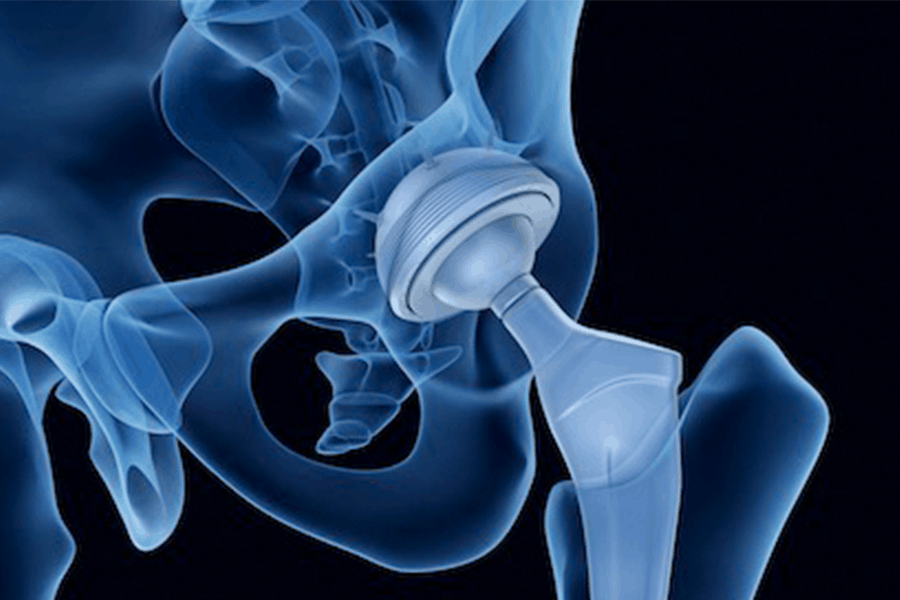 Why would I need a hip replacement?
Why would I need a hip replacement?- What is an anterior hip replacement?
- How is a posterior hip replacement different from an anterior replacement?
- What makes an anterior hip replacement a more effective option?
- Do I qualify for an anterior hip replacement?
- Is an anterior hip replacement right for me?
Each year in the United States, surgeons perform more than 330,000 hip replacements. For many Americans who suffer from hip and joint pain, these procedures can improve their quality of life, improving mobility while relieving inflammation.
While having your hip replaced may seem daunting at first, recent advances in surgical technology have made the procedure safe, effective, and widely available for patients. Like all medical procedures, the quality and techniques used in modern hip replacement have improved over time. One advancement in modern hip replacement is the anterior surgical approach, which minimizes the impact surgery has on the surrounding tissue.
In this article, we’ll go over what anterior hip replacement is, why you might want to consider having this procedure, and how it compares to other hip replacement surgeries.
Why Would I Need a Hip Replacement?
Is hip pain affecting your day-to-day activities? Has your mobility declined? Have medications, physical therapy, or other treatments failed to alleviate your pain?
These are all signs that you may need a hip replacement procedure.
Surgeons will typically recommend hip replacement surgery if you suffer from one or more of the following issues:
- Broken Hip
- Worn Joint
- Osteoarthritis
- Rheumatoid Arthritis
In these instances, hip replacement surgery can relieve symptoms and increase mobility by removing and replacing damaged bone and tissues.
What Is Anterior Hip Replacement?

An anterior hip replacement is a less invasive surgical procedure that involves replacing the damaged or worn-out hip joint with a prosthetic (human-made) implant. The surgery is performed through an anterior approach, which means the incision occurs on the front of the hip rather than the side or back of the body.
During anterior hip replacement surgery, the surgeon will make a small incision on the front of the hip, just below the groin area. This allows the orthopedist to access the hip joint without cutting through muscle or tendons.
The first step in the procedure is removing the damaged or worn-out ball-and-socket hip joint, which is accomplished by carefully removing the ball from the socket.
Next, the orthopedic surgeon prepares the socket of the joint (acetabulum) to receive the new prosthetic implant. The surgeon will then remove any damaged or diseased bone and cartilage from the joint.
Once the area is ready to receive the replacement, the surgeon will insert an implant consisting of a metal or ceramic ball. Then the implant is carefully positioned and secured in place to ensure a proper fit and leg alignment.
After the procedure, you will be taken to a recovery area in the surgical facility.
Dr. Clegg performs hip replacements through an anterior, muscle sparing approach. Generally, anterior hip replacement takes an hour or less. All of Dr. Clegg’s surgeries are performed in an outpatient setting, allowing patients to go home the same day.
After anterior hip replacement, your orthopedic surgeon will share specific recovery instructions, including physical therapy exercises to help you heal.
Comparing Anterior and Posterior Hip Replacement Approaches
While they involve similar approaches and produce similar results, posterior and anterior hip replacement procedures differ slightly in their approach. These differences include:
- Where the incision is made on the body
- The size of the incision
Most hip replacement patients qualify and receive a traditional posterior hip replacement.
During this procedure, the incision is cut along the side of the hip, closer to the buttocks and back. The orthopaedic surgeon will then make an incision as you lay on your side—through the cut, your surgeon will access and detach some of the muscle tissue from the ball and socket of your hip joint.
While effective, a posterior approach may come with a longer recovery period—not only does the joint itself have to heal, but the muscle groups that were cut to access the joint will also have to recover.
By comparison, anterior hip replacement surgery involves an incision on the front of the hip. Without severing the muscle tissues, they are gently pushed to the side, leaving them intact as surgeons work around the joint.
With less damage caused to the surrounding tissue, an anterior hip replacement requires a shorter recovery period with fewer complications. Especially in older patients, these tissues can take time to reattach and return to strength—by leaving them intact, an anterior hip replacement offers a more convenient and flexible procedure with less risk.
What Makes Anterior Hip Replacement a More Effective Option?
Some surgeons consider anterior hip replacement to be a better choice than a traditional posterior hip replacement for several reasons:
- Faster recovery period
- Reduced pain and blood loss
- Increased mobility
- Reduced risk of hip dislocation post-surgery
- Increased range of motion
Given the clear benefits of this procedure, you may wonder why only a percentage of patients undergo anterior hip replacement surgery. While the procedure offers greater upside, not all patients are good candidates for anterior hip replacement. Your overall health, age, and the severity of your condition are factors your orthopedic surgeon will consider to determine if an anterior hip replacement is right for you. For patients who qualify, the surgery offers a convenient and effective solution with high rates of success.
Is Anterior Hip Replacement Right for Me?

Keep in mind that there may be factors that disqualify you from undergoing an anterior hip replacement or from having any hip replacement at all. These include:
- Hip or Pelvis Deformities
- A History of Blood Clots
- Heart Disease
- Lung Disease
- Obesity
- Previous Hip Surgery
- Severe Osteoporosis (inoperable due to brittle bones)
Everyone’s body is different. While these factors may prevent some patients from undergoing a hip replacement, this is not true in all cases. Some individuals with these conditions may still qualify for surgery. For this reason, patients interested in this procedure should undergo a thorough examination by an orthopedic surgeon to determine their candidacy for surgery.
Finding Relief with Dr. Travis Clegg
Many patients turn to hip replacement surgery after more conservative approaches fail to treat or alleviate the uncomfortable symptoms of hip pain. In these cases, hip replacement surgery offers a safe and effective solution that can relieve discomfort while restoring mobility to the damaged areas.
To determine your eligibility for this procedure, Dr. Clegg will conduct a thorough examination of your health history and present condition before walking you through your treatment options.
Anterior hip replacement is a modern alternative to traditional surgery with incredible upside for patients. While the procedure is growing in popularity, it requires a skilled surgical hand—Dr. Clegg regularly performs anterior hip replacements on patients of all ages and has years of experience helping patients with this delicate procedure.
Considering a hip replacement? Contact us today to request an appointment—our office is standing by to get you back on your feet.
Are you experiencing knee pain? Get the relief you need with a surgical team that cares. Dr. Clegg and his staff are standing by to help and are here to answer your questions. Call us at 1-812-945-5633.
